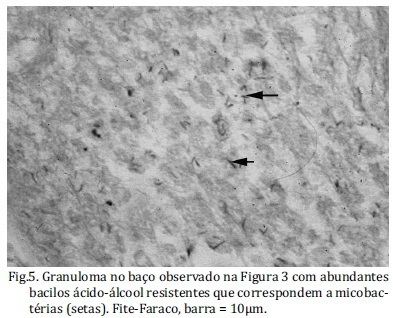Order Actinomycetales Higher classification Mycobacterium | Phylum Actinobacteria Family Mycobacteriaceae Scientific name Mycobacterium marinum Rank Species | |
 | ||
Similar Mycobacterium, Mycobacterium kansasii, Bacteria, Mycobacterium fortuitum, Mycobacterium chelonae | ||
Mycobacterium marinum (formerly M. balnei) is a free-living bacterium, which causes opportunistic infections in humans. M. marinum sometimes causes a rare disease known as aquarium granuloma, which typically affects individuals who work with fish or keep home aquariums.
Contents
History
Although Aronson isolated this mycobacterium in 1926 from a fish, it was not until 1951 that it was found to be the cause of human disease by Linell and Norden. Large outbreaks of infection due to this atypical mycobacterium have been described in association with swimming. Infections related to swimming pools have now drastically fallen due to the improvements in the construction and maintenance of these facilities.
The first case of M. marinum infection associated with a fish-tank ('fish-tank granuloma') was reported in 1962 by Swift and Cohen. M. marinum infection may be an occupational hazard for certain professions such as pet shop workers, but most infections occur in fish fanciers who keep an aquarium at home. Although infection may be caused by direct injury from the fish fins or bites, most are acquired during the handling of the aquariums such as cleaning or changing the water. Indirect infection has also been described related to a child’s bathing utensils that had been used to clean a fish tank. Due to an increased awareness of the disease and improved isolation methods, more and more cases are being recognized and reported worldwide.
Clinical features
Skin lesions produced by M. marinum infections may be single but are often multiple. Typically, clusters of superficial nodules or papules are described. An erythematous plaque has also been reported. The lesions may be painful or painless and may become fluctuant. The lesions typically occur on the elbows, knees and feet in swimming pool-related cases, and on the hands and fingers in aquarium owners. The inhibition of growth of M. marinum at 37 °C is related to its ability to infect the cooler parts of the body especially the extremities. Lesions appear after an incubation period of about 2–4 weeks, and after 3–5 weeks they are typically 1–2.5 cm in diameter. Although most infections follow an indolent course, the disease can progress rapidly. Rarely, disseminated infection and bacteremia has been reported in immunocompromised patients.
Diagnosis
Diagnosis is frequently delayed, probably due to the rarity of the infection and a failure to elicit the usual history of aquatic exposure. Common misdiagnoses include fungal and parasitic infection, cellulitis, skin tuberculosis, rheumatoid arthritis, foreign body reaction, and skin tumor. A high index of suspicion and a detailed history are important in establishing the diagnosis of M. marinum infection. Long delays in diagnosis can result in severe, destructive infection. On primary isolation M. marinum grows on LJ slants at 30–33 °C in 7–21 days. Unlike M. tuberculosis, most strains of M. marinum will not grow at the usual incubation temperature of 37 °C. Colonies are cream in color and turn yellow when exposed to light (photochromogenic). M. marinum, once cultured, is readily identified by using conventional mycobacterial characterization methods. It grows relatively quickly (1 to 2 weeks) and is easily recognized as a result of its photochromogenicity. Infections due to M. marinum can usually be treated with antimycobacterial drugs. Sometimes, cultures are negative but the diagnosis is still made based on physical signs supported by typical histological findings, as M. marinum is a very common atypical mycobacterium causing skin infection (70). Various DNA-based techniques have been used to classify mycobacteria. All such studies have demonstrated a high taxonomic affiliation between M. ulcerans and M. marinum. Some M. marinum isolates have been shown to harbor the insertion sequence, IS2404, however, no M. marinum strains contain IS2606. M. ulcerans isolates are positive for both insertion sequences. It was previously thought that IS2404 and IS2606 were specific to M. ulcerans but recent evidence has proved this true only for IS2606.
Treatment
The management of M. marinum infections depends on the severity of the infection. A prolonged course of antibiotic therapy is curative in most superficial cases but adjunctive surgical intervention is sometimes indicated in extensive and deep infections. M. marinum is heat sensitive and very hot compresses applied directly to the infected area have been effective in eradicating the bacterium. (The compress should be as hot as can be safely tolerated and the surrounding skin should be protected.)
Use of minocycline, clarithromycin, and ethambutol has been described.
The 2014 BBC 2 program "Hive Alive 2" shows an anecdotal instance of severe, necrotic, disseminated and antibiotic resistant infection successfully treated with secondary closure of the ulcers using a regimen of a commercially available honey-based antibiotic. The patient is reported to have ongoing risk of new lesions following future skin breaks as he remains with disseminated, albeit quiescent, infection.
Research
Zebrafish infected with M. marinum are used as a laboratory animal model organism to study tuberculosis infections.
Media
A 2011 episode of Mystery Diagnosis featured a man whose severe hand infection was eventually found to have been caused by M. marinum entering through a cut in his hand while he was cleaning his home aquarium.
